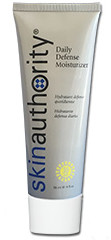You constantly hear from skin care experts that you should be covering yourself in SPF everyday. The only problem is not all SPFs are created equal. We have been receiving a lot of calls to our Skin Coaches with confusion about how to know what kind of sun protection to use. Does a higher number SPF mean better protection? What are UVA and UVB rays? What does it mean to be broad spectrum? We’re going to set the record straight on sunscreens.
What is SPF?
SPF stands for Sun Protection Factor. It refers to the amount of time that the product can block UVB rays. These are the burning rays. Unless the product is labeled broad spectrum, it most likely does not have any protection against UVA rays. These are the aging and cancer rays.
What are UVA and UVB?
UVA: stands for Ultraviolet A. These rays are longer and can penetrate through the clouds and glass. The rays can penetrate deeper into the skin and cause more long-term damage, such as wrinkling, leathering, sagging, and photoaging. Most of the time when you think you are getting your SPF from your makeup, it is not guarding against this kind of “aging” ray. These rays can give you sun damage while driving in your car or indoors with windows.
UVB: stands for Ultraviolet B. These are the burning rays, so this damage you will see more immediately than UVA damage. Although a sunburn may seem like temporary damage, it leaves long-term damage that will last for the rest of your life. The SPF in makeup typically only guards against this type of ray.
Broad spectrum: You should look for this distinction on any sunscreen that you use. It signifies that the product will effectively block both UVA and UVB rays.
What do different levels of SPF mean?
Most dermatologists and skin care experts recommend using an SPF of 15 or greater every single day. When you look at a bottle though, you probably think that SPF 30 gives you twice as much protection as SPF 15 and SPF 45 will be three times better, right? Unfortunately, it is not that easy.
- SPF 15 blocks 94% of UV rays.
- SPF 30 blocks 97% of UV rays.
- SPF 45+ blocks 98% of UV rays.
- No sunscreen will offer 100% protection.
Are higher SPFs actually better?
Yes and no. While they technically give a small percentage more protection, they also contain more chemicals to give you that extra protection. If the sunscreen has a high SPF but is not broad spectrum, you will still be incurring significant UVA damage even though you do not see a burn.
With all levels of SPF, you need to reapply every 2 hours in the sun, or after sweating or swimming. So if you apply SPF 100 in the morning, but never reapply throughout the day, you will receive less protection than if you had used broad spectrum SPF 15 that you reapplied every 2 hours. It also should be noted that if you are not applying the recommended amount of sunscreen (a teaspoon for your face and neck and 1 oz or a shot glass amount for your body) then you are only receiving a fraction of the protection.
No SPF offers 100% protection.
Even if you are wearing a broad spectrum high SPF, you should still take other sun protective measures. Wearing a high SPF sunscreen can cause a false sense of security and protection, leading to neglecting other sun-safe precautions. Wear a hat, sun protective clothing, and sunglasses, and seek shade whenever possible.
At the end of the day, there are so many sunscreens out there, you need to know specifically what to be looking for to make sure you get the best one for you. Whether it has anti-aging benefits with antioxidants, a luxurious texture, or lacks that “sunscreen smell,” if you find quality sun protection (broad spectrum SPF 15+) that you enjoy wearing, it will be much more likely that you will make a habit out of daily application. The best sunscreen is the one that you will wear consistently.
Your Skin Authority Skin Coach Recommends:
Daily Defense Moisturizer SPF 30 / Age Defying Moisturizer SPF 18



